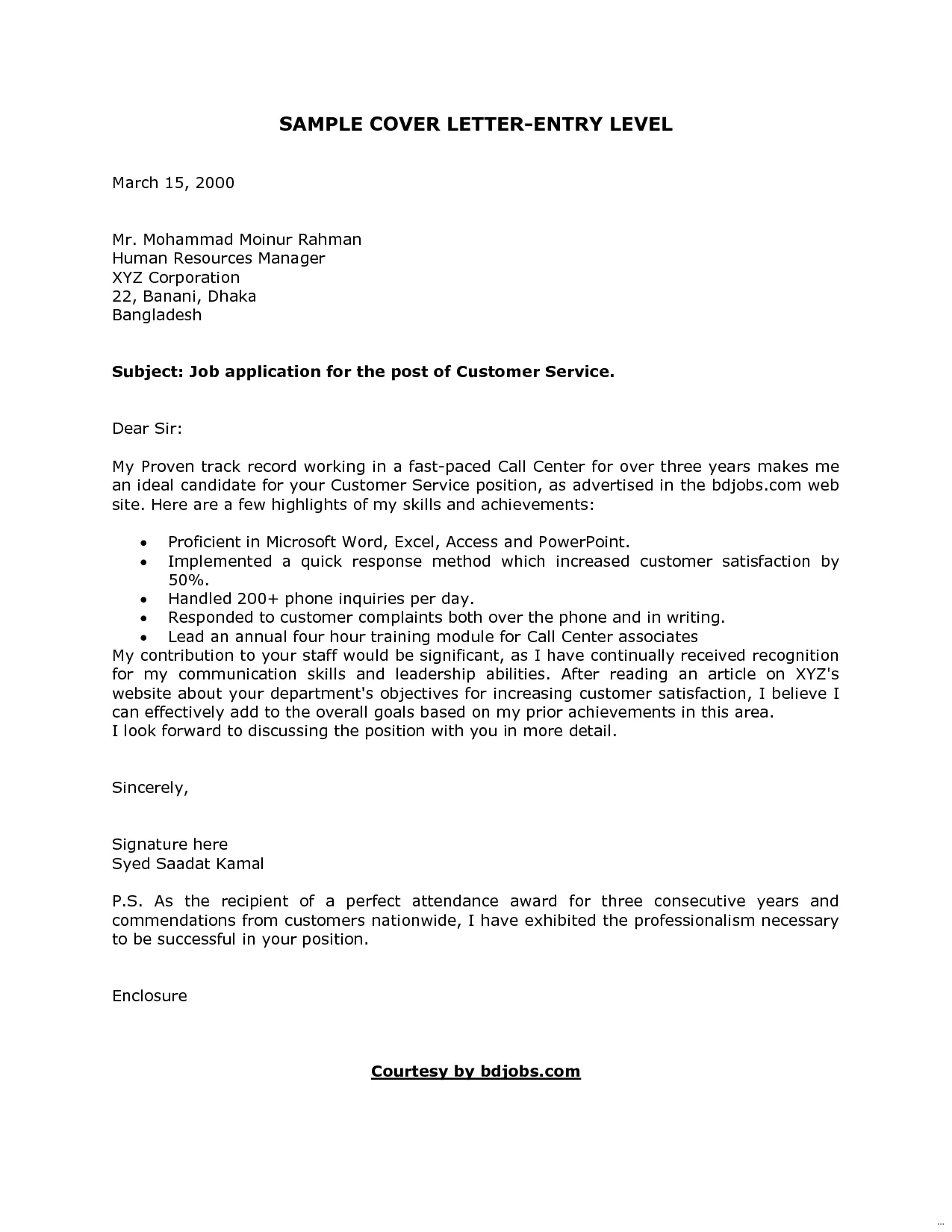What is a Cover Letter?
A cover letter is a crucial document that accompanies your resume when applying for a job. It serves as an introduction, providing a concise overview of your qualifications, skills, and experiences, while expressing your interest in the specific position and the company. Unlike your resume, which presents a factual account of your professional background, a cover letter allows you to highlight relevant aspects of your career, explain your career goals, and demonstrate your personality and enthusiasm for the role. This document allows you to make a first impression and persuade the hiring manager why they should consider you for the job.
Why Is a Cover Letter Important?
In the competitive job market, a well-written cover letter can significantly increase your chances of securing an interview. It provides a platform to showcase your unique qualifications and tailor your application to the specific requirements of each job. A cover letter lets you connect with the hiring manager on a personal level, demonstrating your genuine interest in the company and the position. By addressing the employer’s needs, you position yourself as a valuable asset. Moreover, a cover letter demonstrates your communication skills, attention to detail, and professionalism, which are essential qualities that employers seek. A compelling cover letter often differentiates you from other applicants and makes a memorable impact.
Key Components of a Perfect Cover Letter
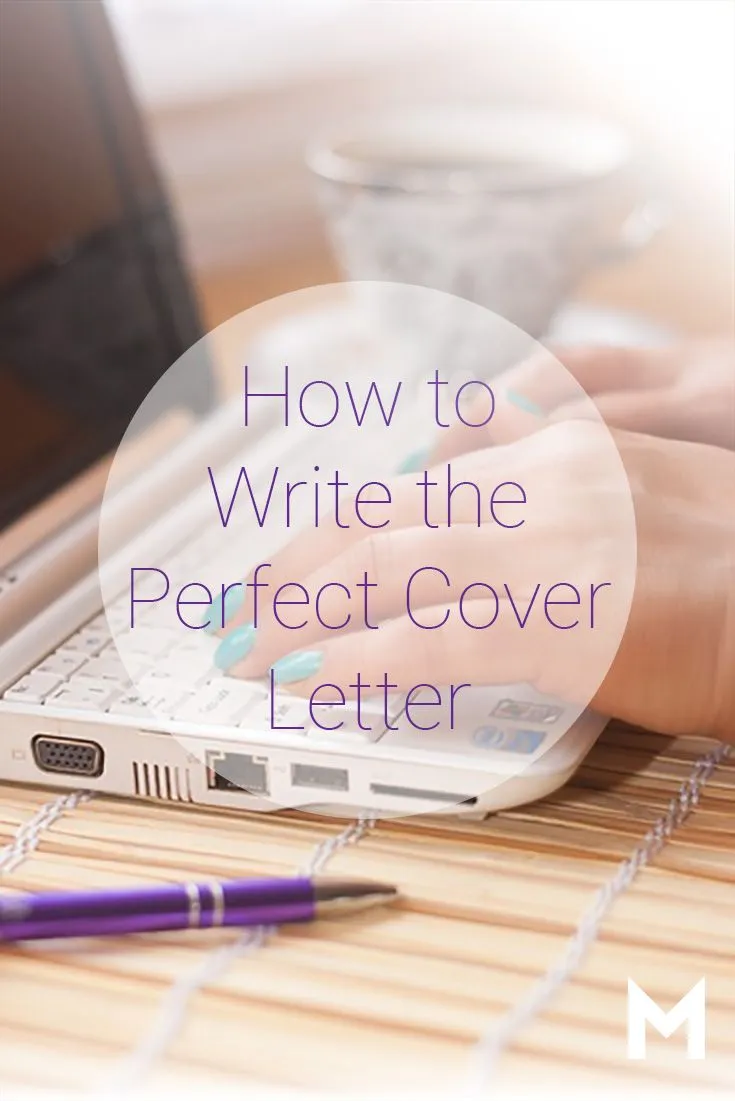
A perfect cover letter should have specific components to make a strong impact. Structure your letter in a way that is easy to read and immediately provides value to the hiring manager. Every section should build on each other, making a strong case for why you’re a strong fit for the job. The following sections are critical to a perfect cover letter.
Contact Information and Date
Start with your contact information at the top of the letter. Include your full name, phone number, email address, and professional social media profiles, such as LinkedIn. This makes it easy for the hiring manager to contact you. Include the date that you are sending the letter.
Greeting the Hiring Manager
Address the hiring manager directly by name whenever possible. Research the name of the hiring manager or the specific person who will be reading the application. If you cannot find the name, use a professional greeting such as “Dear Hiring Manager” or “Dear [Department Name] Team.” Avoid generic greetings like “To Whom It May Concern,” as they can make your letter seem less personal.
The Introduction Grab Their Attention
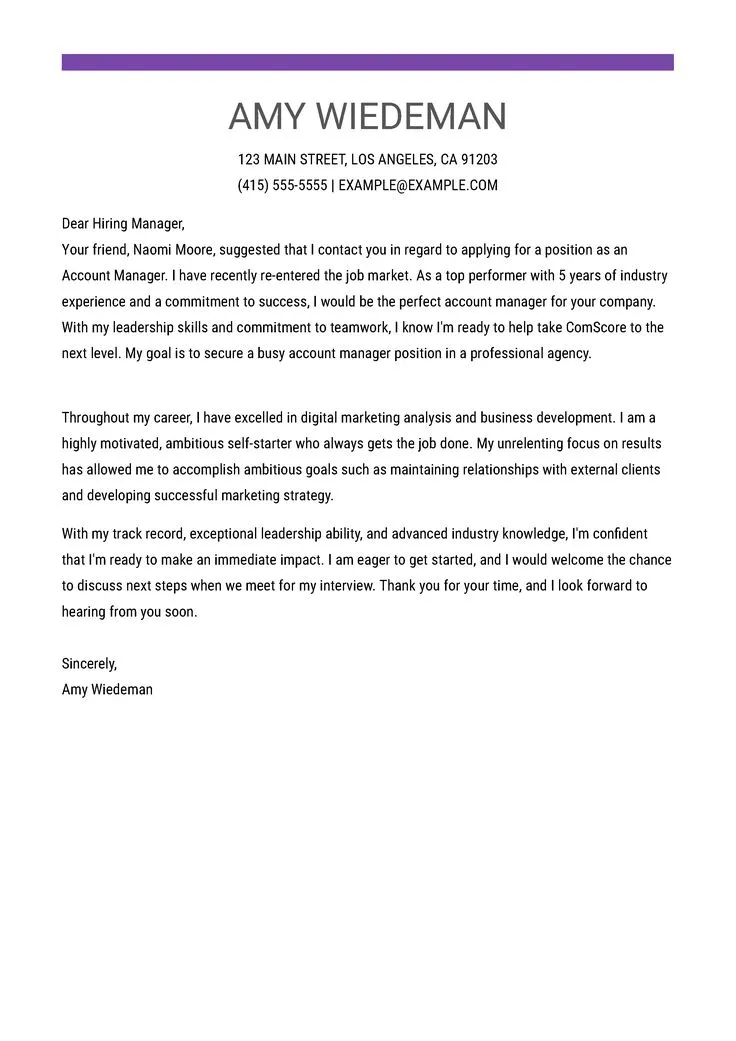
Begin with a strong introductory paragraph that immediately grabs the reader’s attention. State the position you are applying for and how you found the job opportunity. Briefly mention why you are interested in the role and the company. Highlight a key skill, achievement, or your passion for the field to create an immediate positive impression.
Highlight Your Skills and Experience
The main body of your cover letter should highlight your most relevant skills and experience. Tailor your content to match the job description’s requirements. Provide specific examples of how your past experiences have prepared you for the role. Focus on accomplishments and quantify your achievements whenever possible. Explain how your skills and experience align with the company’s needs and how you can contribute to their success.
Quantify Your Achievements
Whenever possible, quantify your achievements using numbers and data. This provides concrete evidence of your impact in previous roles. Instead of saying “Increased sales,” state “Increased sales by 15% within six months.” Quantifying your achievements adds credibility and demonstrates your ability to deliver results. This is a great way to showcase your performance in previous roles, demonstrating the value you can bring to the company.
Showcase Your Personality and Enthusiasm
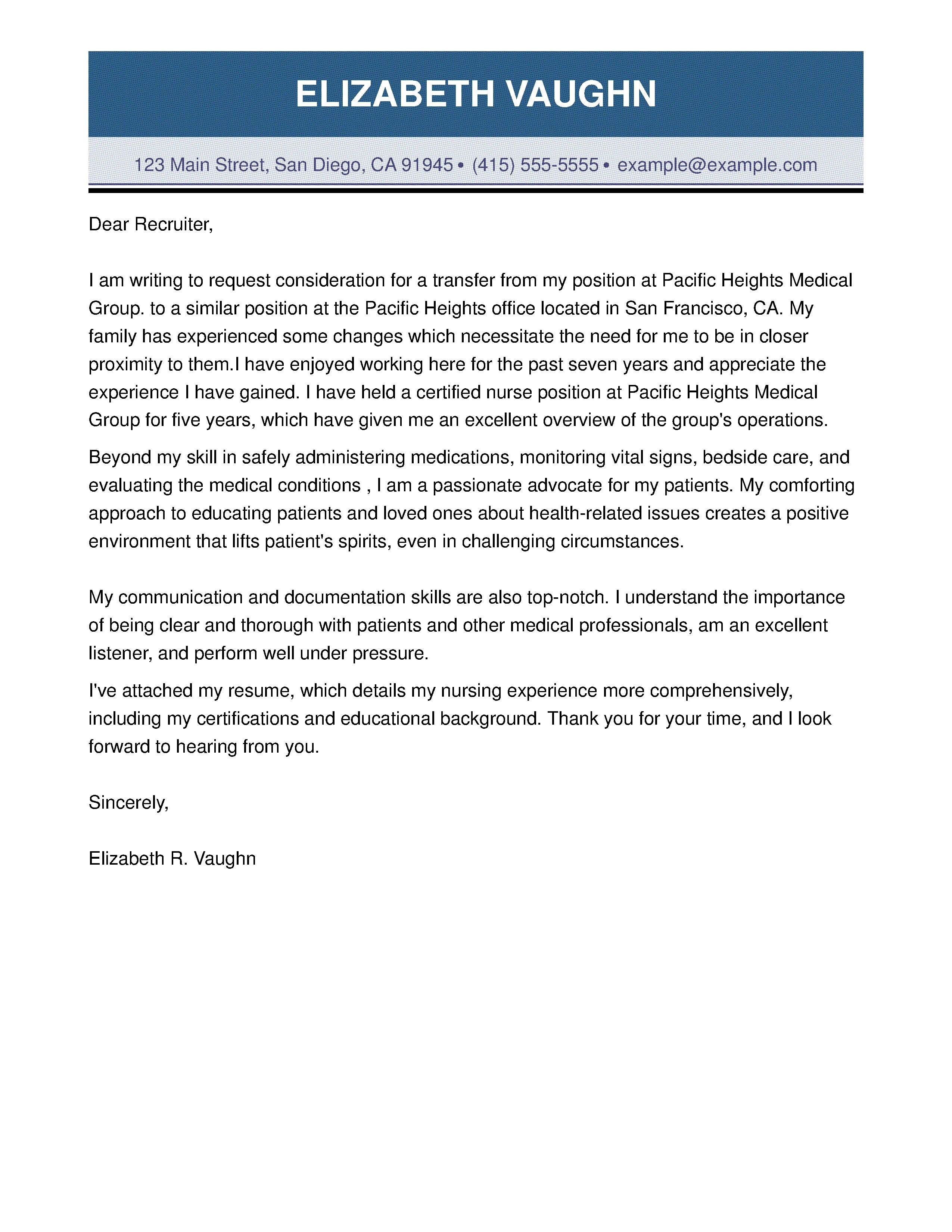
Let your personality shine through in your cover letter. Express your enthusiasm for the position and the company. Use a professional and positive tone that reflects your passion and interest. This can make your application more memorable and demonstrate that you’re a good cultural fit for the organization.
Why Are You a Great Fit
Explain why you are the perfect fit for the job and the company. Discuss how your skills and experiences meet the specific requirements outlined in the job description. Demonstrate your understanding of the company’s mission, values, and goals, and explain how you can contribute to their success. By doing this, you showcase your understanding of the company and your ability to make a meaningful impact.
Call to Action Request an Interview
End your cover letter with a clear call to action. Express your interest in an interview and your eagerness to discuss your qualifications further. Provide your availability for an interview and thank the hiring manager for their time and consideration. Make it easy for the hiring manager to take the next step and invite you to interview.
Proper Closing and Signature

Use a professional closing, such as “Sincerely” or “Best regards.” If you are submitting a digital application, type your full name. If you are submitting a physical application, leave space for your handwritten signature above your typed name.
Cover Letter Formatting Tips
Proper formatting is essential for a professional-looking cover letter. Ensure your letter is easy to read and visually appealing to the hiring manager.
Font and Font Size
Use a clear and professional font, such as Times New Roman, Arial, or Calibri. Ensure your font size is easy to read, typically between 10 and 12 points. Avoid using overly decorative fonts that can distract from your content. Keeping the document simple helps the recruiter stay focused on the information.
Margins and Spacing
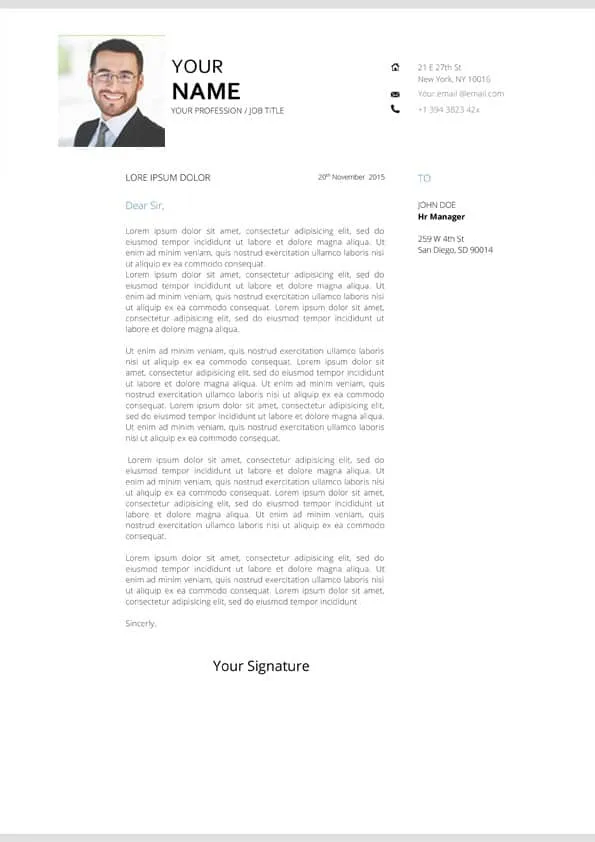
Set your margins to one inch on all sides. Use single-spacing within paragraphs and double-spacing between paragraphs. This provides enough white space, making your letter easy to scan and read.
Proofreading and Editing
Always proofread your cover letter carefully for any errors in grammar, spelling, and punctuation. Ask a friend or family member to review your letter. Errors can damage your credibility and negatively impact your chances. Attention to detail is a crucial aspect of a professional application.
Perfect Cover Letter Sample Example
A sample cover letter can provide valuable guidance on how to structure and write your own. Reviewing samples from your industry can give you an idea of what to include and how to present your qualifications effectively. Adapt the language and style to fit your unique experiences and the specific job requirements.
Tailoring Your Cover Letter
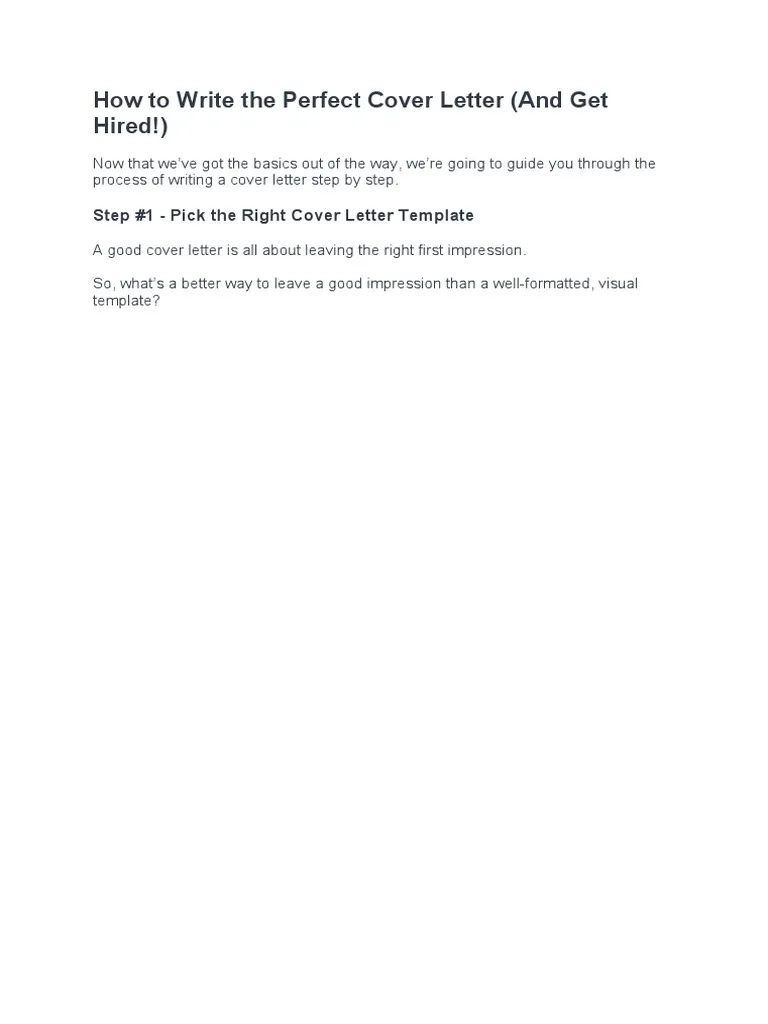
One of the most crucial aspects of writing a perfect cover letter is tailoring it to each job application. Generic cover letters are often dismissed, as they do not demonstrate a genuine interest in the position or the company. To tailor your cover letter effectively, take the following steps.
Research the Company
Before you start writing, research the company to understand their mission, values, and recent achievements. This information helps you demonstrate your interest and tailor your cover letter to their specific needs. Visit the company’s website, read their press releases, and review their social media profiles to learn more about their culture and goals.
Match Skills to Requirements
Carefully review the job description and identify the key skills and experiences the employer is looking for. Highlight these skills in your cover letter, providing specific examples of how you have demonstrated these skills in the past. Use keywords from the job description, but always ensure your writing is natural and authentic.
Use Keywords Effectively
Incorporate relevant keywords from the job description into your cover letter. This helps your application pass through applicant tracking systems (ATS) and ensures your qualifications are easily visible to the hiring manager. However, avoid keyword stuffing; the goal is to write naturally and effectively convey your qualifications. Focus on integrating keywords seamlessly into your writing.
Common Cover Letter Mistakes to Avoid
Avoiding common mistakes is essential to ensure your cover letter makes a positive impression. Be aware of common pitfalls that can undermine your application.
Generic and Vague Content
Avoid using generic language that could apply to any job. Tailor your content to the specific position and company, providing concrete examples of your skills and achievements. Demonstrate that you understand the job’s requirements and how your experience aligns with them.
Typos and Grammatical Errors
Always proofread your cover letter carefully. Typos and grammatical errors can make you appear careless and unprofessional. Use a grammar checker and ask a friend or family member to review your letter for any mistakes. A polished and error-free cover letter demonstrates your attention to detail and professionalism.
Too Long or Too Short
Keep your cover letter concise and focused. Aim for one page, unless specifically instructed otherwise. Ensure that you provide enough details to showcase your qualifications and express your interest in the role. Avoid making your cover letter too long, as it can overwhelm the hiring manager. Keep it concise, and you will make a stronger impact.
Examples of Perfect Cover Letters by Industry
Different industries may have specific expectations for cover letters. Researching examples from your industry can provide valuable insights into the preferred format and content. Tailor your cover letter to meet industry-specific standards to increase your chances of success.
Tips for Different Industries
Understand the norms and expectations of your specific industry. Tailor your language, format, and tone to match industry standards. Highlight relevant achievements and skills that are particularly valued in your field. For example, a cover letter for a creative role may be more visually appealing, whereas a cover letter for a legal position may be more formal.
Cover Letter for Entry-Level Jobs
For entry-level positions, focus on your academic achievements, extracurricular activities, internships, and any relevant volunteer experience. Highlight transferable skills, such as communication, teamwork, and problem-solving. Emphasize your enthusiasm for the role and your eagerness to learn and grow within the company. This is the perfect opportunity to show potential, and employers know this.
Cover Letter for Experienced Professionals
Experienced professionals should highlight their professional achievements, leadership skills, and the impact they’ve had in previous roles. Quantify your accomplishments whenever possible and demonstrate how you can add value to the company. Tailor your cover letter to showcase your expertise and the value you bring to the position.
